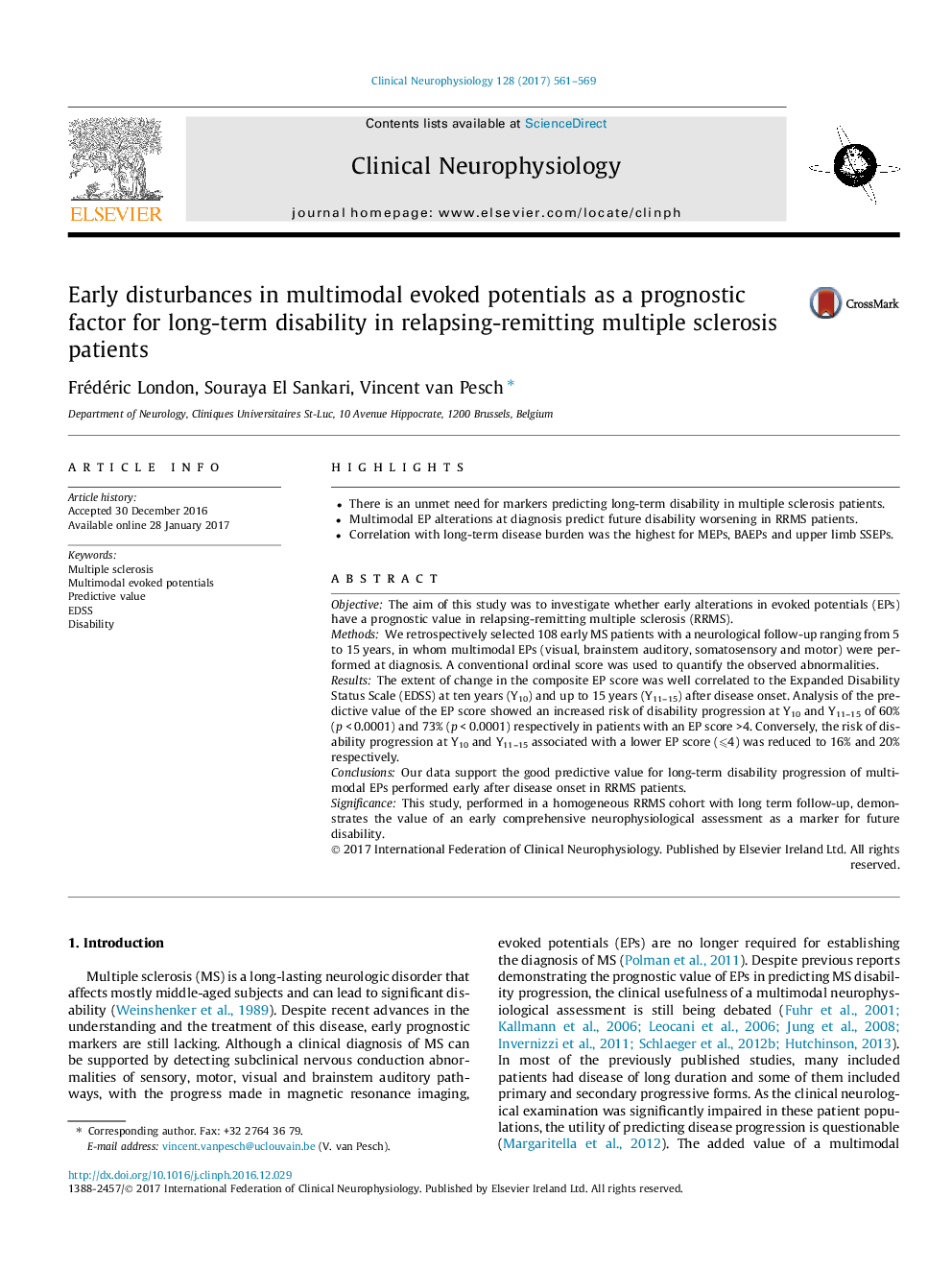| Article ID | Journal | Published Year | Pages | File Type |
|---|---|---|---|---|
| 5627648 | Clinical Neurophysiology | 2017 | 9 Pages |
â¢There is an unmet need for markers predicting long-term disability in multiple sclerosis patients.â¢Multimodal EP alterations at diagnosis predict future disability worsening in RRMS patients.â¢Correlation with long-term disease burden was the highest for MEPs, BAEPs and upper limb SSEPs.
ObjectiveThe aim of this study was to investigate whether early alterations in evoked potentials (EPs) have a prognostic value in relapsing-remitting multiple sclerosis (RRMS).MethodsWe retrospectively selected 108 early MS patients with a neurological follow-up ranging from 5 to 15 years, in whom multimodal EPs (visual, brainstem auditory, somatosensory and motor) were performed at diagnosis. A conventional ordinal score was used to quantify the observed abnormalities.ResultsThe extent of change in the composite EP score was well correlated to the Expanded Disability Status Scale (EDSS) at ten years (Y10) and up to 15 years (Y11-15) after disease onset. Analysis of the predictive value of the EP score showed an increased risk of disability progression at Y10 and Y11-15 of 60% (p < 0.0001) and 73% (p < 0.0001) respectively in patients with an EP score >4. Conversely, the risk of disability progression at Y10 and Y11-15 associated with a lower EP score (⩽4) was reduced to 16% and 20% respectively.ConclusionsOur data support the good predictive value for long-term disability progression of multimodal EPs performed early after disease onset in RRMS patients.SignificanceThis study, performed in a homogeneous RRMS cohort with long term follow-up, demonstrates the value of an early comprehensive neurophysiological assessment as a marker for future disability.
